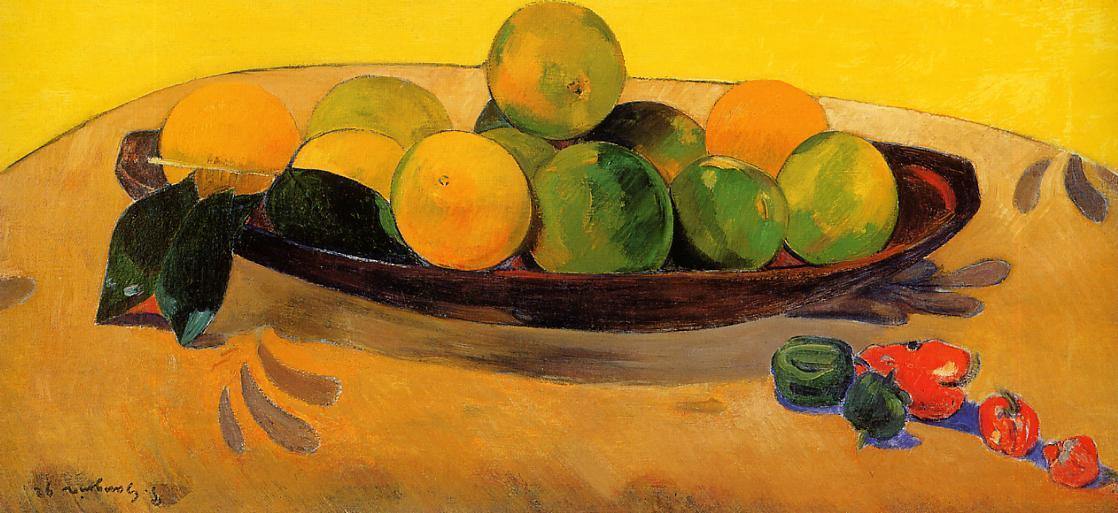Description
Paul Gauguin's Still Life With Tahitian Oranges is a masterpiece of Post-Impressionist art that has captivated art lovers for decades. This painting, created in 1899, is one of Gauguin's most iconic works and represents his love for Polynesian culture.
The composition of the painting is impressive, with the Tahitian oranges placed on a carved wooden plate and surrounded by green leaves. The background of the painting is a bright yellow wall, contrasting with the orange and green tones of the fruits and leaves.
Gauguin's artistic style is evident in this work, with his use of bright, bold colors and his technique of thick, expressive brushwork. The painting also shows the influence of Polynesian culture on Gauguin's work, with the depiction of Tahitian oranges and green leaves resembling the region's tropical plants.
The story behind the painting is fascinating, as Gauguin created this work while living on the island of Tahiti. During his time there, Gauguin fell in love with the island's culture and natural beauty, and this is reflected in his work. The painting also represents Gauguin's search for a simpler and more authentic life, away from European society.
In addition to its beauty and cultural significance, there are lesser-known aspects of this painting that make it even more interesting. For example, Gauguin is believed to have used a painting technique called "dry paint" to create the texture of the leaves and oranges in the painting. Gauguin is also known to have used a variety of materials to create this work, including oil paint, wax, and paper.

